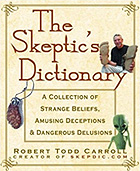From Abracadabra to Zombies | View All
collective unconscious
The collective unconscious is a part of the unconscious mind common to all humans. According to Carl Jung, the collective unconscious contains archetypes, universal mental predispositions not grounded in experience. Like Plato's Forms (eidos), the archetypes do not originate in the world of the senses, but exist independently of that world and are known directly by the mind. Unlike Plato, however, Jung believed that the archetypes arise spontaneously in the mind, especially in times of crisis. Just as there are meaningful coincidences, such as the beetle and the scarab dream described in the entry on synchronicity, which open the door to transcendent truths, so too a crisis opens the door of the collective unconscious and lets out an archetype to reveal some deep truth hidden from ordinary consciousness.
Mythology, Jung claimed, bases its stories on the archetypes. Mythology is the reservoir of deep, hidden, wondrous truths. Dreams and psychological crises, fevers and derangement, and chance encounters resonating with "meaningful coincidences" all gateways to the collective unconscious, which is ready to restore the individual psyche to health with its insights. Jung maintained that these metaphysical notions are scientifically grounded, yet they are not empirically testable in any meaningful way. In short, they are not scientific at all, but pseudoscientific.
further reading
Gallo, Ernest. "Synchronicity and the Archetypes," Skeptical Inquirer, vol.18, No. 4, Summer 1994.
McGowan, Don. What is Wrong with Jung (Amherst, N.Y.: Prometheus Books, 1994).
Noll, Richard. The Aryan Christ : The Secret Life of Carl Jung (Random House, 1997).
Noll, Richard. The Jung Cult : Origins of a Charismatic Movement (Free Press, 1997).


